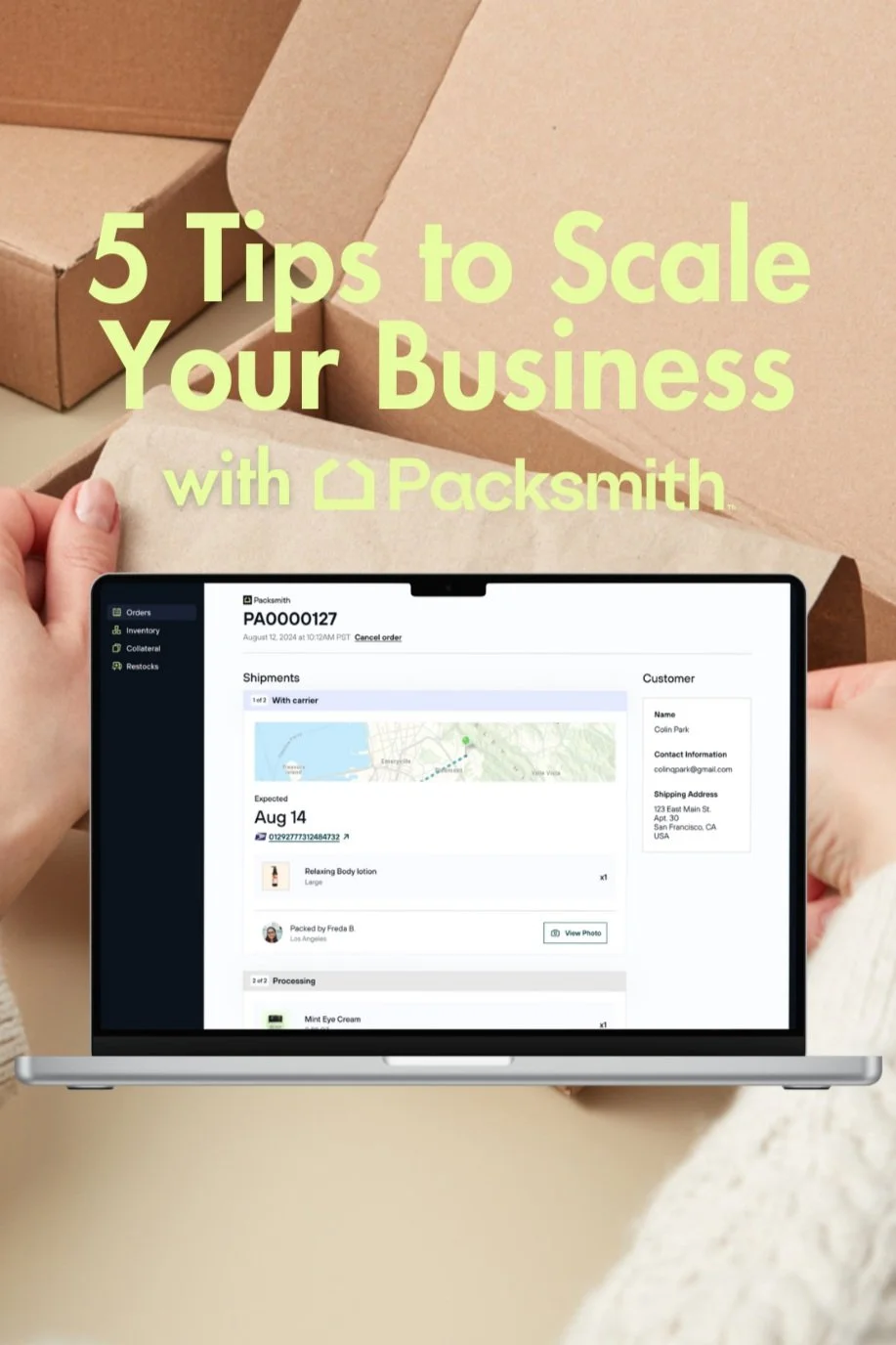3 Trends That Prove Digital is the New Normal–And What it Means For Your Business
Sage advice to keep your business safe online.
The COVID-19 pandemic, as well as recent consumer behavior shifts in e-commerce, have caused long-lasting impacts to the U.S. small business market, prompting businesses to digitize as a means of future-proofing their businesses.
Having a digitally led approach is critical to equipping small business owners with the tools and solutions they need to survive in an uncertain environment. Many small business owners are ready and willing to take the plunge and do what's needed to digitize their business, yet 64% have said they found it challenging to do so. (2020 North America SBO Comms Survey, Mastercard)
At our recent Money Moves Digital Summit, Ginger Siegel, the North America small business lead at Mastercard, identified three trends that prove that digital is the new normal. ICYMI, we’re sharing them below, along with Siegel’s tips to help reinvigorate your business both on and offline–and more importantly, keep it safe. Read on for her sage advice.
Trend #1: Contactless Spending
As the realities of COVID-19 hit businesses and individuals alike demanded lower touch options for making and receiving payments.
Although 2020 was already a year we expected to see increases in contactless spending, COVID-19 has accelerated this behavior and made consumer demand shift quicker than anticipated. 46% of global consumers have swapped out their top-of wallet card for a card that provides contactless functionality (2020 North America SBO Comms Survey, Mastercard)
With social distancing evolving into a long-term norm, continued reliance on delivery, pick-up, and alternative points of sale will mandate versatile payment methods, making the market primed for tap on phone adoption. 74% of consumers said they will continue using contactless post-pandemic. (2020 North America SBO Comms Survey, Mastercard)
Trend #2: Digital Services
As COVID-19 continues to stress small businesses financially and operationally, small business owners across North America are turning to digital services to improve cash flow and modernize their payments ecosystems.
The majority of small businesses said that speed and security and transparency were their top priorities. This includes changing how their business sends and receives payments and moving clients to more digital methods. This shift to digital services is not only good for business, it increases customer satisfaction as well. In fact, 81% of businesses said when they do move to more digital payments, it does improve the satisfaction level of their customers, proving digital really is the new normal. (2020 North America SBO Comms Survey, Mastercard)
Trend #3: Cybersecurity Prevention
In our new normal, heightened fraud and bad actors in the ecosystem will require small businesses to start paying for far greater attention to cyber security threats than ever before. Business is uncertain enough—with 80% of small businesses reporting they did not monitor cyber security threats prior to the pandemic, many are incredibly vulnerable to exploitation by bad actors looking to capitalize on the current market chaos. (Zogby Analytics survey commissioned by National Cyber Security Alliance (NCSA) - Oct 2019)
Small businesses are looking for partners and advisors to help protect them against the unknown in a new world. Partners who step in and predict, educate, and guide small businesses on impending threats will become essential to their survival in the new normal.
To help close the digital divide and prepare for what’s next, Mastercard’s Digital Doors™ program, provides small businesses the everyday business management tools and solutions to help small businesses go digital–and keep them safe. Digital Doors offers the resources and support to help small businesses navigate through current challenges and build for the future–from digital readiness diagnostic tools, educational content, and Mastercard and partner solutions.
Cyber Attacks Cost Small Businesses an Average of $200,000—Here's How to Avoid Them
We’ve got you covered.
Even before COVID hit, small businesses were prime targets of costly cyber attacks. On average, cyber attacks cost small businesses as much as $200,000 in 2019. By the numbers, 28% of small businesses experienced a data breach within the last 12 months, of which 37% suffered a financial loss, 25% filed for bankruptcy, and 10% went out of business. Now, as small businesses rapidly shift their brick-and-mortar shops online to accommodate consumers’ accelerated adoption of e-commerce, they’re even more vulnerable to cyber threats.
To learn more about how small businesses can safely and successfully pivot to digital during COVID and beyond, Create & Cultivate partnered with Mastercard as the presenting sponsor to host an eye-opening cybersecurity workshop led by none other than Ginger Siegel, the North America Small Business Lead at Mastercard, at our recent Future of Work Summit. Below, we’re sharing some of the most valuable takeaways from the information-packed session. If you missed the workshop (or just want a quick refresher course!), scroll on—and be sure to grab a pen because you’re going to want to commit this info to memory!
The Trends Pushing Small Businesses to Go Digital
Trend #1: Contactless Payment
With social distancing evolving into a long-term norm, continued reliance on delivery, pick-up, and alternative points of sale will push small businesses to adopt more versatile payment methods, making the market for contactless payment methods such as tap on phone adoption, says Siegel.
“We already expected to see an increase in contactless spend, but COVID-19 has really accelerated this behavior and made consumer demand shift quicker than anticipated,” she explains. “46% of global consumers have swapped out their top-of-wallet card for one the provides contactless functionality, and about 74% of consumers said they will continue using contactless post-pandemic.”
Trend #2: E-Commerce
As consumers increasingly rely on e-commerce solutions, getting the basics of business operations online will be essential for small businesses’ survival, explains Siegel. According to Mastercard SpendingPulse, e-commerce in April and May made up 22% of all retail sales in the U.S., which is up from 11% in 2019.
Put another way? More money was spent online in the U.S. in the span of two months than the last 12 Cyber Mondays combined. If small businesses don’t keep pace, they may lose the opportunity to meet market demands in the future. “82% of small businesses have actually changed the way they send and receive payments and 51% have been transitioning their clients to digital methods,” notes Siegel.
Trend #3: Digital Services
While online card payments have seen an increase of 60% during the pandemic, the use of cash and checks has decreased by 34% and 24%, respectively, according to a recent survey conducted by Mastercard. “67% of small businesses said that one upside to the pandemic is that it prompted them to upgrade their digital payment solutions,” notes Siegel of the trend.
“Small businesses plan to stick with digital business payments, even as the pandemics subsides,” says Siegel, pointing to increased customer satisfaction as the driving factor behind the shift. About 70% of small businesses say that they're willing to invest in the technology required to advance their payment systems and 73% say digital payments are the new normal for their business going forward, she notes.
The Top Cyber Threats to Small Businesses
As small businesses rely on digital payments to serve their customers and digital means to communicate with employees, cyber threats are becoming more and more prevalent in the small biz community. 43% of cyberattacks are aimed at small businesses, but only 14% are prepared to defend themselves, according to Accenture.
Here are two common types of cyber threats to small businesses:
Threat #1: Ransomware
In this scenario, bad actors gain access to data from a small business and demand a ransom payment in order to return the stolen and now-encrypted data.
Threat #2: Compromised email
In this case, a bad actor gains access to a small business employee’s email account and sends an internal email impersonating the employee making an urgent request for funds to be transferred to them.
The Steps for Getting Started With Cybersecurity
If you don’t know where to start with cybersecurity, you’re not alone. According to Keeper Security, 60% of small business owners do not have a cyberattack prevention plan. “81% of small businesses tell us that they really wish that someone would proactively alert them to changes in the cybersecurity landscape and provide best practices for small business,” explains Siegel.
Which is why Mastercard is developing dedicated cybersecurity solutions and educational resources for small business owners through their Digital Doors center, a curated set of resources to help guide, grow, and protect small businesses during these difficult times as well as through recovery. For more information on navigating COVID-19 as a small business, head to Mastercard.com.
“
67% of small businesses said that one upside to the pandemic is that it prompted them to upgrade their digital payment solutions.”
—Ginger Siegel is the North America Small Business Lead at Mastercard
About the Expert: Ginger Siegel is the North America Small Business Lead at Mastercard. Most recently, she was a senior manager in the financial services group in Deloitte where she was a member of the highly ranked payments practice and also focused on fintech and bank partnerships, small business, and commercial banking opportunities in the areas of strategy development, process design, and operation model transformation. She brings 30 years of industry leadership experience as an executive at large multinational and regional banks in the areas of small business, business banking, and retail with a focus on strategy, leading execution, payments, treasury management, SalesForce optimization, branch optimization, and revenue growth.
















